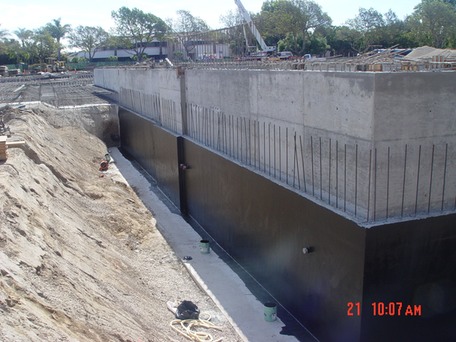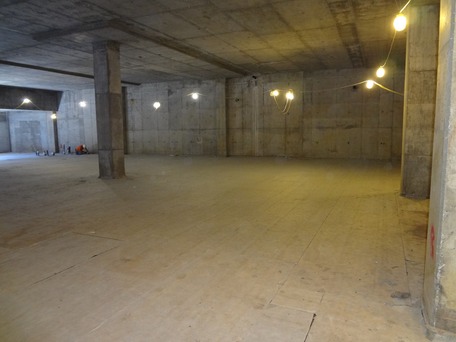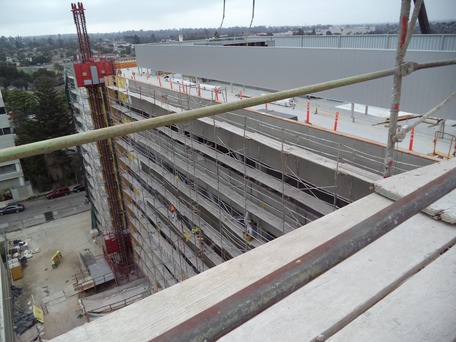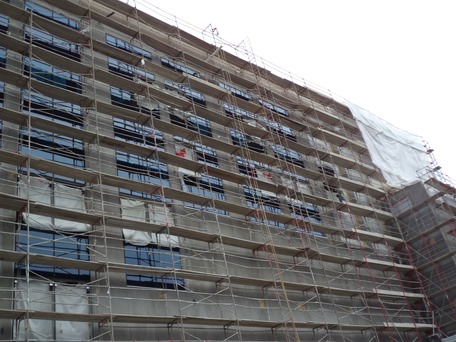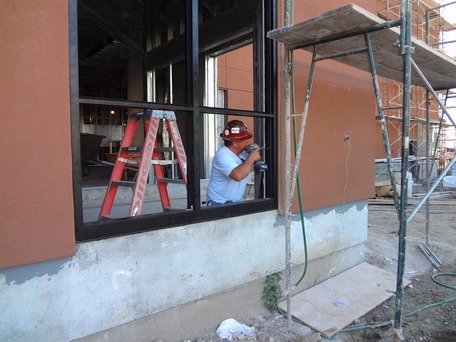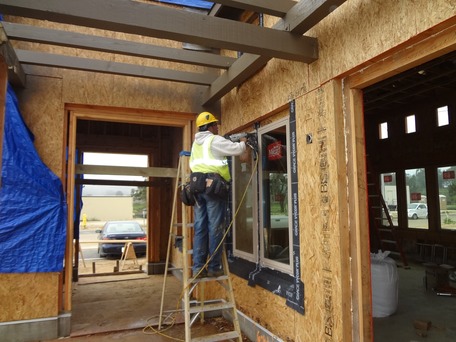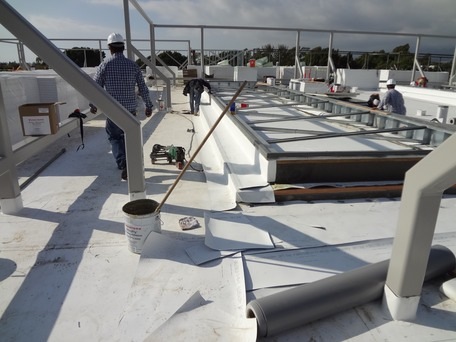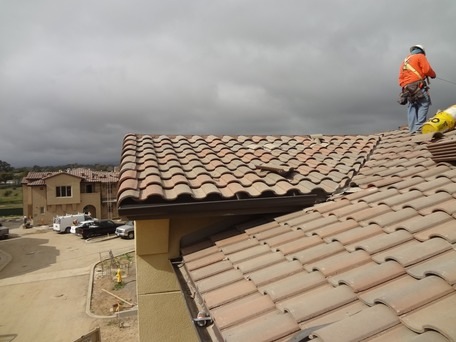

WATERPROOFING
Waterproofing membranes and materials are utilized in nearly all aspects of Building Envelope contruction. From below-grade waterproofing of basements and parking structures, to exterior walls, including fenestration (windows and doors), to the roof, proper integration of the waterproofing elements of the Building Envelope is key.
PROFESSIONAL ROOFING & WATERPROOFING CONSULTANTS possesses the knowledge our clients need to identify the different types of waterproofing materials, their uses and installation requirements. We make it our business to know manufacturers' installation and building code requirements, as well as the requirements of other industry standards such as ASTM (American Society for Testing and Materials), NRCA (National Roofing Contractors’ Assn.), SMACNA (Sheet Metal and Air Conditioning Contractors’ National Assn.), AAMA (American Architectural Manufacturers Assn.), EIMA (EIFS Industry Members Assn.), So. Cal. Plastering Institute and TRI (Tile Roofing Institute), to name a few.
WATERPROOFING MEMBRANES
There are several different types of BELOW-GRADE waterproofing membranes. When installed during new construction or when trenching is an option during retrofitting operations, the following types of waterproof membranes may be utilized to provide "positive side" waterproofing. Typically, the waterproofing membrane is attached to the outside of the BELOW-GRADE surface, covered with a protection membrane and the trench is refilled (sub-surface drains - French drains, for instance - may or may not be necessary):
- ASPHALTIC - Asphaltic membranes typically consist of emulsified (liquid) asphalt and reinforcing fabric, fiberglass or organic, applied in layers.
- POLYMER MODIFIED BITUMEN - Modified asphalt membranes are available as hot-applied fluid products and as sheet membranes.
- CLAY - Also known as "Bentonite", clay waterproofing is available in rigid, flexible and granular forms.
- POLYURETHANES - Urethane membranes are typically fluid-applied and remain elastomeric (flexible) throughout their useful lives. This group of waterproofing membrane materials is commonly referred to as "Fluid-Applied Elastomers".
- OTHER waterproofing membrane materials occasionally encountered include COAL TAR, BUTYL RUBBER, EPDM, CRYSTALINE and CEMENTITIOUS products.
During retrofitting operations, when trenching is not a viable option, low-pressure injection may be considered. In this process, ports are driven through the BELOW-GRADE surface (concrete wall or floor) and high-viscocity waterproofing materials are injected at low pressure through the surface to the outside, creating a "positive side" waterproof membrane. These materials are also utilized to fill and repair cracks in concrete walls and floors, preventing further water intrusion. Injection materials typically include:
- POLYURETHANES - Injectable polyurethanes are used to fill cracks in concrete and to create "positive side" waterproof membranes (curtains or bladders). The materials are typically "hydrophobic" or "hydrophilic". In simple terms, hydrophobic materials are used for crack injection, while hydrophilic materials are used to create waterproof curtains or bladders behind structures, such as walls or floors.
- CLAY - Injection clays, such as "Bentonite", are generally used to create waterproof curtains or bladders behind structures, such as walls and floors.
EXTERIOR WALLS can be waterproofed in many different ways, usually dependant on the type of exterior finish utilized. Stucco systems typically utilize asphalt saturated building paper, for instance, and EIFS systems typically utilize fluid-applied waterproofing membranes.
EXTERIOR DECK AND BALCONY SURFACE waterproofing membranes are typically fluid-applied (sometimes over reinforcing fabrics) and typically remain elastomeric (flexible) throughout their useful lives.
DECK SUB-SURFACE waterproofing membranes can be applied in the same manner as deck surface membranes or by utilizing ASPHALTIC or POLYMER MODIFIED BITUMEN products interlaced with fiberglass or polyester based ply sheets.
For a brief discussion of ROOFING MEMBRANES, please see our “Roofing” page.
Office: 805-933-3369
Mobile: 805-797-0558
